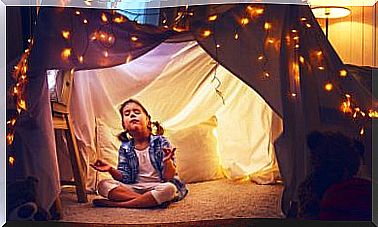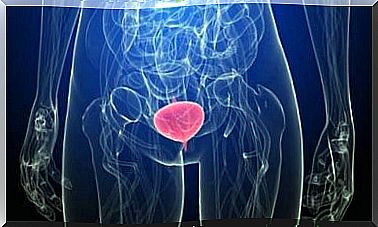Childhood Asthma: Causes And Diagnosis
Childhood asthma is a very common pathology at this stage of life. In fact, it is the most common chronic disease in childhood. It is estimated that it affects between 5 and 15% of the child population and its incidence is gradually increasing.
Asthma is a disease characterized by inflammation of the airways. This leads to a difficulty in breathing, accompanied by coughing, a feeling of suffocation and abnormal noises when breathing in or out.
Asthma is often associated with allergies. This is one of the reasons why more and more children are thought to be affected. For example, it is very common for an asthmatic child to be allergic to pollen or mites.
In this article we explain what are the most common causes of childhood asthma and its symptoms. In the same way, we will explain how it is diagnosed, since it is very important to distinguish it from other pathologies to establish an adequate treatment.
What is childhood asthma?
Childhood asthma, as we have already mentioned, is that the child’s airways become inflamed. This causes the air to find more resistance when it comes to entering and leaving the lungs. It is a disease that appears in the form of a crisis.
Most children with childhood asthma experience their first attack before they are four years old. What happens is that, although there is inflammation of the airways that remains at baseline, in these crises it worsens and the symptoms worsen.
It should be noted that more than half of asthmatics are allergic to some substance, such as pollen or mites. This condition is what triggers most of the asthmatic attacks.
Symptoms of childhood asthma
This pathology usually manifests itself with shortness of breath and a feeling of congestion in the chest. Children who suffer from it tend to cough frequently. The cough is made much worse by any infection, cold or stress.
Also, it is very easy to hear noises during breathing. They are called wheezing. They are sounds that resemble a whistle when the child breathes in or out. However, it is important to know that each one is different and that the symptoms vary depending on the case.
On the other hand, due to the association with allergies, two key stages are usually distinguished in cases of childhood asthma:
- The first delicate time for these children is the beginning of autumn and the school year, due to changes in temperature.
- The second time when there are more childhood asthma attacks is spring. It is due, above all, to the increase in pollen in the environment, since it is one of the most important allergens for the entire population.
What are the complications of childhood asthma?
Although most children only suffer from the symptoms that we have already mentioned, some of them may experience complications. Most often, childhood asthma is associated with sleep problems, due to difficulty breathing.
On the other hand, any respiratory infection usually takes longer to heal. Also, asthmatic children tend to be more tired and may have trouble playing or exercising.
How is it diagnosed?
Childhood asthma is difficult to diagnose, especially in children under 5 years of age. This is so because there are other pathologies that have similar symptoms or that are associated with asthma itself. For example, rhinitis, bronchiolitis or sinusitis.
There are some tests that can help the doctor make the diagnosis. First of all, we find spirometry, which allows evaluating lung function. If this test is not conclusive, the exhaled nitric oxide test can be used.
In conclusion
Childhood asthma is a highly prevalent disease with multiple causes and risk factors. Genetics play an important role, but so do stress, cold, allergies, and so on.
It is difficult to diagnose because it shares symptoms with other diseases. Therefore, the most important thing is to explain the symptoms well to the doctor and carry out the necessary tests. Thus, an appropriate treatment can be established and prevent the child’s childhood from being harmed.









